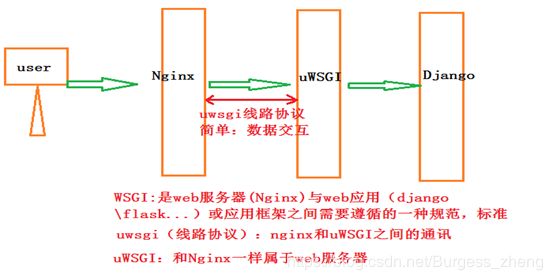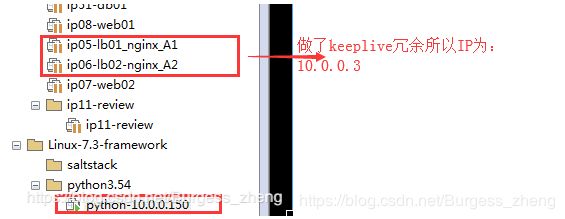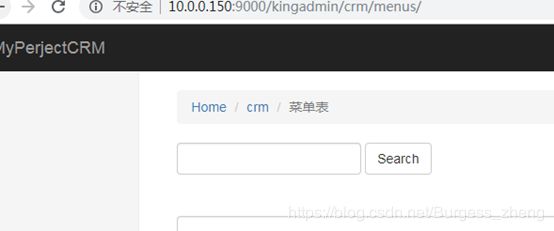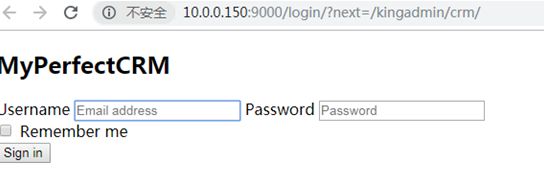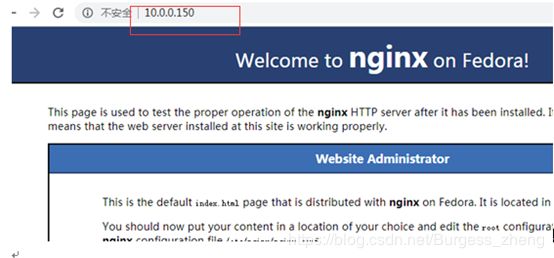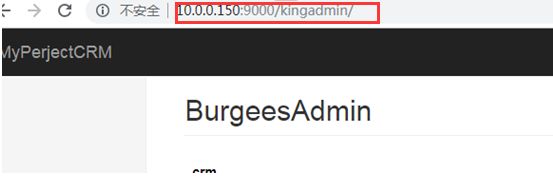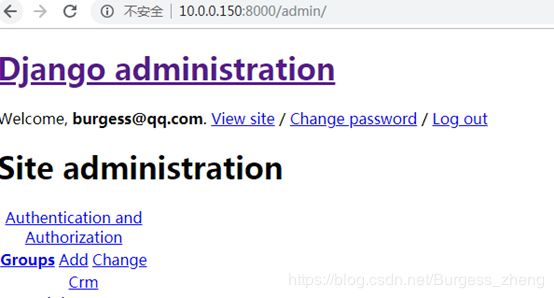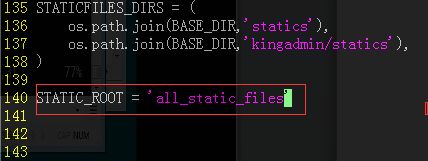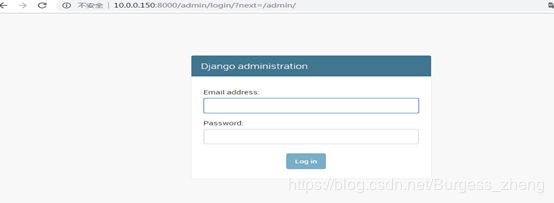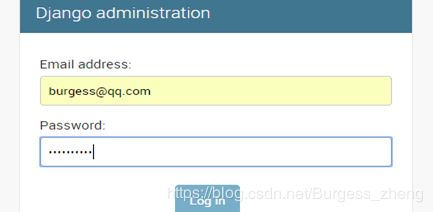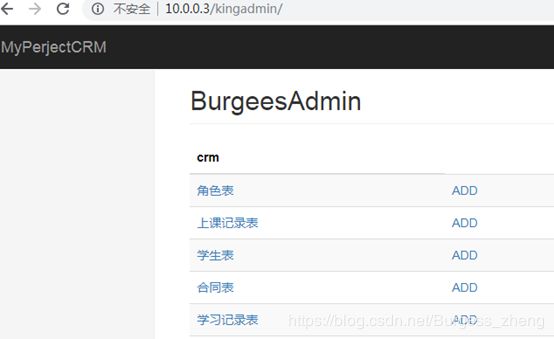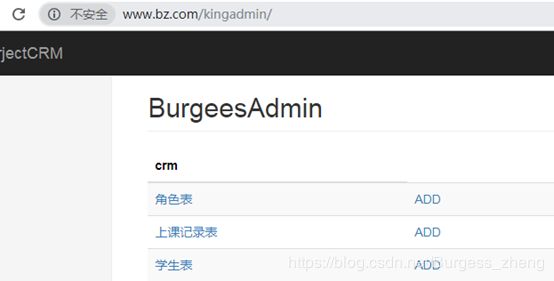django项目之生产环境部署Django+uwsgi+nginx
目录篇:Django总目录篇 点击跳转
目录
- 部署前戏
- uwsgi介绍
- 让Django并发多少都不是问题
- linux实战部署Django+uwsgi+nginx
- 1.环境准备
- 2.部署uswgi并测试
- 3.部署Django程序并测试
- 4.usgi与nginx之间的线路通讯配置
- 5.监控uwsgi的负载
- 6.安装NGINX
- 7.配置nginx和uwsgi直接的通讯配置并测试
- 8.配合负载均衡
- 9.最终测试
- 10.查看nginx访问日志看用户访问流程
部署前戏
pycharm环境下的django承受不了多并发(几十个人并发访问就down掉)
生成环境中django需要承载高并发的,所以是Django + Uwsgi + Nginx(IO多路复用epel)
uwsgi介绍
uWSGI是一个Web服务器,它实现了WSGI协议、uwsgi、http等协议。Nginx中HttpUwsgiModule的作用是与uWSGI服务器进行交换。
要注意 WSGI / uwsgi / uWSGI 这三个概念的区分。
1.WSGI是一种Web服务器网关接口。它是一个Web服务器(如nginx,uWSGI等服务器)与web应用(如用django\Flask\tornado\nodejs\..\框架写的程序)通信的一种规范。
2.uwsgi是一种线路协议而不是通信协议,在此常用于在uWSGI服务器与其他网络服务器的数据通信。(uWSGI和Nginx一样属于WEB服务器,而uwsgi线路协议是为uWSGI服务的)
3.而uWSGI是实现了uwsgi和WSGI两种协议的Web服务器。
4.uwsgi协议是一个uWSGI服务器自有的协议,它用于定义传输信息的类型(type of information),每一个uwsgi packet前4byte为传输信息类型描述,它与WSGI相比是两样东西。
web访问顺序:用户访问--->Nginx---->uWSGI---->django
从上面看nginx +uWSGI+django一台机器可以每秒处理并发2000+
uWSGI的主要特点如下
1.超快的性能
2.低内存占用(实测为apache2的mod_wsgi的一半左右)
3.多app管理(终于不用冥思苦想下个app用哪个端口比较好了-.-)
4.详尽的日志功能(可以用来分析app性能和瓶颈)
5.高度可定制(内存大小限制,服务一定次数后重启等)
让Django并发多少都不是问题
除了部署nginx +uWSGI+django一台机器可以每秒处理并发2000+
我们还需要配合服务器集群
如果你懂linux服务器集群,下面是以前写的用户到网站的集群内部流程(意味你有多少台web服务器,并发随之增长)
linux实战部署Django+uwsgi+nginx
1.环境准备
服务器:
负载均衡服务器 ip:10.0.0.6(使用了niginx工具实现负载均衡,同时使用了keeplive做了冗余,所以IP是10.0.0.3)(这里不详解,牵涉Linux服务器集群,以后会写)
web服务器ip:10.0.0.150 (部署Django+uwsgi+nginx)
用户IP(本地机器):10.0.0.1
正常访问流程:
1.10.0.0.1(本地用户)访问10.0.0.3(负载均衡服务器ip10.0.0.6做了keeplife所以是10.0.0.3)---->
2.把请求交由负载均衡服务器(10.0.0.6)的web池随机的一个web服务器(由于是实验所以该池只指定一个web 服务器10.0.0.150(部署Django+uwsgi+nginx))------>
3.把请求交由web服务器ip10.0.0.150:80端口(uwsgi+django+nginx该服务器)----->
4.然后80端口的server里的locathon把请求交本地的8001端口(nginx和uswgi互通的端口)指向端口8001----->
5.8001在把请求转交给10.0.0.150:9000(该9000端口是通过uwsgi启动我们的Django程序))
2.部署uswgi并测试
10.0.0.150
[root@python ~]# pip install uwsgi #安装uwsgi
[root@python ~]# mkdir uwsgi_test
[root@python ~]# cd uwsgi_test/
[root@python uwsgi_test]# vim test.py
def application(env, start_response):
start_response('200 OK', [('Content-Type','text/html')])
return [b"Hello World"] # python3
#return ["Hello World"] # python2
#这里相当于一个处理函数(视图)
#加入环境变量并且启动
[root@python uwsgi_test]# find / -name uwsgi
/usr/local/python/bin/uwsgi
[root@python uwsgi_test]# ln -sv /usr/local/python/bin/uwsgi /usr/bin/uwsgi
[root@python uwsgi_test]# uwsgi --http :8000 --wsgi-file test.py
10.0.0.150(克隆窗口1)
[root@python ~]# ps -ef |grep uwsgi
root 44820 44643 0 02:26 pts/4 00:00:00 uwsgi --http :8000 --wsgi-file test.py
root 44821 44820 0 02:26 pts/4 00:00:00 uwsgi --http :8000 --wsgi-file test.py
root 44879 44857 0 02:27 pts/3 00:00:00 grep --color=auto uwsgi
#看起来多个进程,但是其实是一个一个进程执行过程中启动了子进程
浏览器访问
3.部署Django程序并测试
10.0.0.150
[root@python ~]# cd /
[root@python /]# mkdir project
[root@python project]# rs –y
[root@python project]# cd MyPerfectCRM/
[root@python MyPerfectCRM]# py manage.py runserver 0.0.0.0:9000
浏览器访问
10.0.0.150
[root@python MyPerfectCRM]# uwsgi --http :9000 --module MyPerfectCRM.wsgi #通过uwsgi启动我们的Django
浏览器访问
问题:静态文件看不到是因为没配置让uwsgi去找你的静态文件(但是我们一般不这样做,因为我们不需要用uwsgi去处理你的静态文件(不用理会)。而是niginx去处理,所以不理)
4.usgi与nginx之间的线路通讯配置
10.0.0.150
[root@python MyPerfectCRM]# vim uwsgi.ini
# uwsig使用配置文件启动
[uwsgi]
# 项目目录
chdir=/project/MyPerfectCRM/
# 指定项目的application
module=MyPerfectCRM.wsgi:application
# 指定sock的文件路径
socket=127.0.0.1:8001
# 进程个数
workers=4
#pidfile=/opt/proj/script/uwsgi.pid
# 指定IP端口
http=10.0.0.150:9000
# 指定静态文件
static-map=/static=/project/MyPerfectCRM/all_static_files
# 启动uwsgi的用户名和用户组i
uid=root
gid=root
# 启用主进程
master=true
# 自动移除unix Socket和pid文件当服务停止的时候
vacuum=true
# 序列化接受的内容,如果可能的话
thunder-lock=true
# 启用线程
enable-threads=true
# 设置自中断时间
harakiri=30
# 设置缓冲
post-buffering=4096
# 设置日志目录
#daemonize=/opt/proj/script/uwsgi.log
#monitor uwsgi status
stats = 127.0.0.1:9191通过uwsgi 启动uwsgi的配置文件方式启动django
[root@python MyPerfectCRM]# uwsgi uwsgi.ini
插入:每个请求耗时 30ms,一个 process 一秒可以处理 30 多个左右的请求,4 个 process 可以处理 120 个请求,差不多。4 核 8G,IO 型应用,process 至少可以写到 50,你先写个 32,不够再加
10.0.0.150(克隆窗口1)
[root@python ~]# ps -ef|grep uwsgi
5.监控uwsgi的负载
10.0.0.150(克隆窗口2)
[root@python ~]# pip install uwsgitop
[root@python ~]# find / -name uwsgitop
[root@python ~]# ln -sv /usr/local/python/bin/uwsgitop /usr/bin/
[root@python ~]# uwsgitop :9191
这个时候如果同时4个用户并发访问,不同进程进行平均接收处理
自定义做个压力512并发访问测试
6.安装NGINX
10.0.0.150(克隆窗口1)
[root@python ~]# yum install nginx
[root@python ~]# systemctl start nginx.service #启动nginx
[root@python ~]# netstat -lntup|grep nginx
可以把参数写到配置文件里
浏览器访问
[root@python ~]# cd /etc/nginx/
[root@python nginx]# ls![]()
根据nginx.conf配置文件找到返回给用户的html
[root@python nginx]# ls /usr/share/nginx/html/
![]()
以后写静态网站的html就可以扔到这里
7.配置nginx和uwsgi直接的通讯配置并测试
[root@python nginx]# ls
#Nginx自身就已经和uwsgi建立了协议
把nginx的uwsgi_params该配置文件拷贝到Django项目下
[root@python nginx]# cp uwsgi_params /root/MyPerfectCRM/
[root@python nginx]# cd conf.d/
[root@python conf.d]# vim myperfectcrm_nginx.conf
# mysite_nginx.conf
# the upstream component nginx needs to connect to
upstream django {
# server unix:///path/to/your/mysite/mysite.sock; # for a file socket
server 127.0.0.1:8001; # for a web port socket (we'll use this first)
}
# configuration of the server
server {
# the port your site will be served on
listen 8000;
# the domain name it will serve for
server_name 10.0.0.150; # substitute your machine's IP address or FQDN
charset utf-8;
# max upload size
client_max_body_size 75M; # adjust to taste
# Django media
location /media {
alias /path/to/your/mysite/media; # your Django project's media files - amend as required
}
location /static {
alias /project/MyPerfectCRM/statics; # your Django project's static files - amend as required
}
# Finally, send all non-media requests to the Django server.
location / {
uwsgi_pass django;
include /project/MyPerfectCRM/uwsgi_params; # the uwsgi_params file you installed
}
}
10.0.0.150
[root@python MyPerfectCRM]# uwsgi uwsgi.ini #重启uwsgi
10.0.0.150(克隆窗口1)
[root@python nginx]# systemctl restart nginx.service #重启nginx
浏览器访问
访问无效的url
#注意:生产环境不可以这样,这样用户都知道你有什么url,绝对不允许
#在django的setting把debug设置成Falsh
[root@python MyPerfectCRM]# cd MyPerfectCRM/
[root@python MyPerfectCRM]# vim settings.py
#生产环境setting的debug一定要该成False
[root@python nginx]# systemctl restart nginx.service #重启nginx
[root@python MyPerfectCRM]# uwsgi uwsgi.ini #重启uwsgi
浏览器访问
浏览器访问Django的admin
#上面配置静态目录指向了project/statics目录,但是admin的静态文件不在我们django的statics目录下,所以nginx找不到
解决:把django所有app的静态文件全部copy到一个目录下
[root@python MyPerfectCRM]# cd ..
[root@python MyPerfectCRM]# py manage.py collectstatic
#会把Django项目下,所有的html都拷贝到指定的目录)
#输入:yes 然后报错,原因是需要在django的setting下设置所有静态文件存放的目录
[root@python MyPerfectCRM]# vim MyPerfectCRM/settings.py
[root@python MyPerfectCRM]# py manage.py collectstatic
[root@python MyPerfectCRM]# ls all_static_files/
![]()
[root@python nginx]# vim conf.d/myperfectcrm_nginx.conf #修改静态目录路径

[root@python MyPerfectCRM]# vim uwsgi.ini #修改静态目录路径
[root@python nginx]# systemctl restart nginx.service #重启nginx
[root@python MyPerfectCRM]# uwsgi uwsgi.ini #重启uwsgi
8.配合负载均衡
10.0.0.6(负载均衡服务器)
[root@lb02 ~]# cd /application/nginx/conf
[root@lb02 conf]# ls![]()
[root@lb02 conf]# cat nginx.conf
10.0.0.150(克隆窗口1)
该nginx与uwsgi通讯配置 ,可以直接直接配置入nginx.conf(然后把conf.d下的myperfectcrm_nginx.conf删除掉)
[root@python nginx]# vim nginx.conf
# For more information on configuration, see:
# * Official English Documentation: http://nginx.org/en/docs/
# * Official Russian Documentation: http://nginx.org/ru/docs/
user nginx;
worker_processes auto;
error_log /var/log/nginx/error.log;
pid /run/nginx.pid;
# Load dynamic modules. See /usr/share/nginx/README.dynamic.
include /usr/share/nginx/modules/*.conf;
events {
worker_connections 1024;
}
http {
log_format main '$remote_addr - $remote_user [$time_local] "$request" '
'$status $body_bytes_sent "$http_referer" '
'"$http_user_agent" "$http_x_forwarded_for"';
access_log /var/log/nginx/access.log main;
sendfile on;
tcp_nopush on;
tcp_nodelay on;
keepalive_timeout 65;
types_hash_max_size 2048;
include /etc/nginx/mime.types;
default_type application/octet-stream;
# Load modular configuration files from the /etc/nginx/conf.d directory.
# See http://nginx.org/en/docs/ngx_core_module.html#include
# for more information.
include /etc/nginx/conf.d/*.conf;
# mysite_nginx.conf
# the upstream component nginx needs to connect to
upstream django {
# server unix:///path/to/your/mysite/mysite.sock; # for a file socket
server 127.0.0.1:8001; # for a web port socket (we'll use this first)
}
# configuration of the server
server {
# the port your site will be served on
listen 80;
# the domain name it will serve for
server_name 10.0.0.150; # substitute your machine's IP address or FQDN
charset utf-8;
# max upload size
client_max_body_size 75M; # adjust to taste
# Django media
location /media {
alias /path/to/your/mysite/media; # your Django project's media files - amend as required
}
location /static {
alias /project/MyPerfectCRM/all_static_files; # your Django project's static files - amend as required
}
# Finally, send all non-media requests to the Django server.
location / {
uwsgi_pass django;
include /project/MyPerfectCRM/uwsgi_params; # the uwsgi_params file you installed
}
}
# Settings for a TLS enabled server.
#
# server {
# listen 443 ssl http2 default_server;
# listen [::]:443 ssl http2 default_server;
# server_name _;
# root /usr/share/nginx/html;
#
# ssl_certificate "/etc/pki/nginx/server.crt";
# ssl_certificate_key "/etc/pki/nginx/private/server.key";
# ssl_session_cache shared:SSL:1m;
# ssl_session_timeout 10m;
# ssl_ciphers HIGH:!aNULL:!MD5;
# ssl_prefer_server_ciphers on;
#
# # Load configuration files for the default server block.
# include /etc/nginx/default.d/*.conf;
#
# location / {
# }
#
# error_page 404 /404.html;
# location = /40x.html {
# }
#
# error_page 500 502 503 504 /50x.html;
# location = /50x.html {
# }
# }
}
9.最终测试
10.0.0.6(负载均衡服务器)
[root@lb02 conf]# ../sbin/nginx -s reload #nginx
10.0.0.150(克隆窗口1)
[root@python nginx]# systemctl restart nginx.service #重启nginx
[root@python MyPerfectCRM]# uwsgi uwsgi.ini #重启uwsgi
通过访问10.0.0.3(负载均衡由于做了kepplive所以是虚拟IP)
使用域名访问
10.查看nginx访问日志看用户访问流程
[root@python nginx]# vim nginx.conf
[root@python nginx]# cat /var/log/nginx/access.log
正常访问流程:
1.10.0.0.1(本地用户)访问10.0.0.3(负载均衡服务器ip10.0.0.6做了keeplife所以是10.0.0.3)---->
2.把请求交由负载均衡服务器(10.0.0.6)的web池随机的一个web服务器(由于是实验所以该池只指定一个web 服务器10.0.0.150(部署Django+uwsgi+nginx)。。。意味如果有多台web服务器那么再多的并发也可以承受)------>
3.把请求交由web服务器ip10.0.0.150:80端口(uwsgi+django+nginx该服务器)----->
4.然后80端口的server里的locathon把请求交本地的8001端口(nginx和uswgi互通的端口)指向端口8001----->
5.8001在把请求转交给10.0.0.150:9000(该9000端口是通过uwsgi启动我们的Django程序))
目录篇:Django总目录篇 点击跳转
